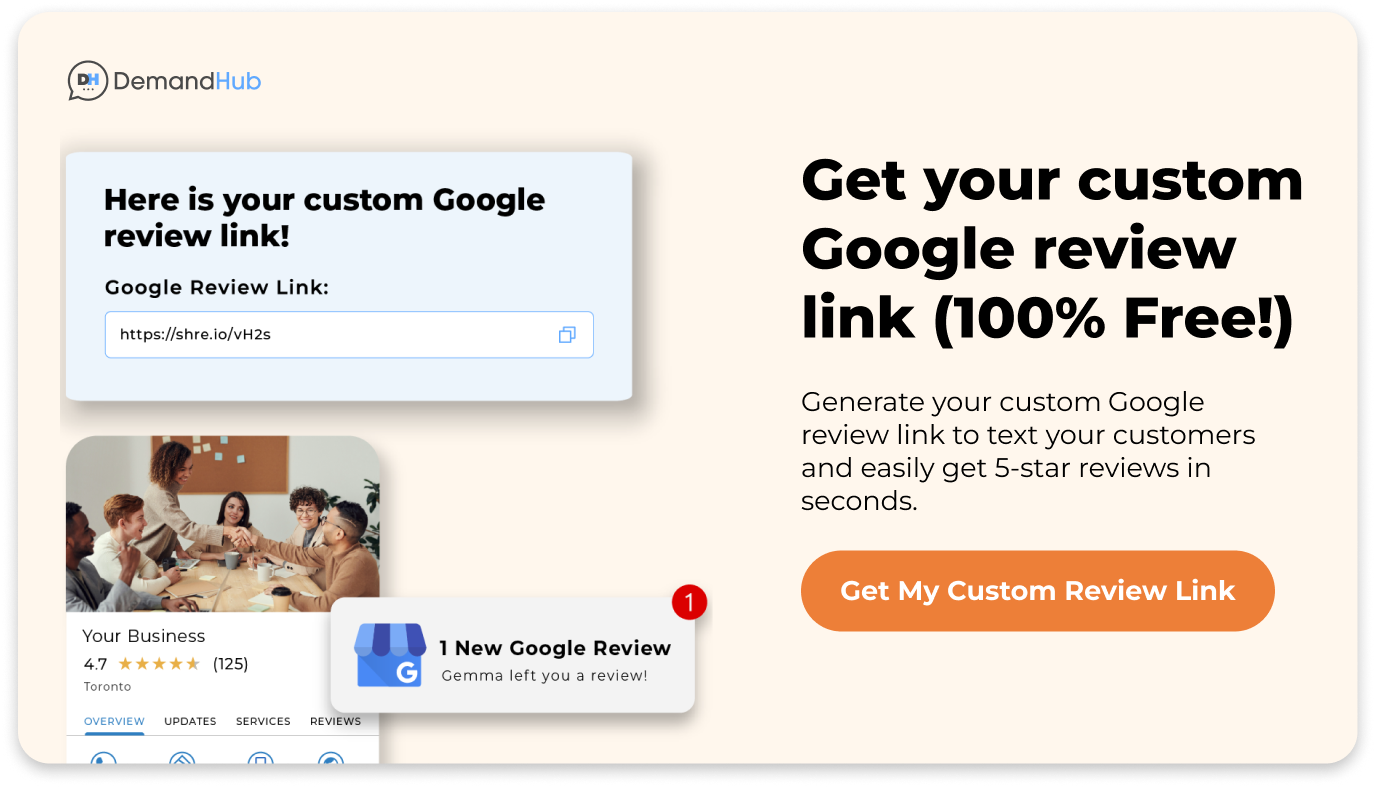The Power of EHR Integration: Benefits and Best Practices
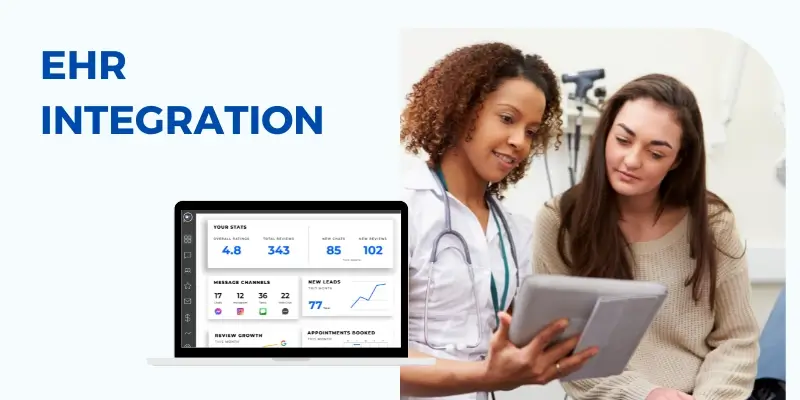
Timely access to accurate patient information is crucial. Yet, many healthcare providers still struggle with outdated paper records, slow communication between healthcare systems, and incomplete patient histories.
These inefficiencies waste valuable time and increase the risk of medical errors, misdiagnoses, and poor patient outcomes.
In the medical industry, every second counts. Therefore, healthcare providers need a solution that enables them to access comprehensive patient information quickly and securely.
The solution: Electronic Health Records (EHR) integration.
EHR integration is changing how healthcare is delivered by enabling seamless exchange of patient data between different healthcare systems. With EHR integration, providers can access a patient’s complete medical history in real-time, leading to better decision-making, improved patient care, and enhanced collaboration among healthcare professionals.
Nearly all (96%) non-federal acute care hospitals have adopted certified Electronic Health Record (EHR) systems, recognizing their immense benefits.
Table of Contents- What is EHR Integration, and Why is it Important?
- Benefits of EHR Integration for Healthcare Providers and Patients
- Challenges and Solutions for EHR Integration
- 5 Best EHR Integration Software for Your Practice Management
- Best Practices for EHR Integration
- Future of EHR Integration and Healthcare
- Conclusion
What is EHR Integration, and Why is it Important?
EHR integration is the process of connecting and synchronizing multiple Electronic Health Record (EHR) systems to enable seamless data exchange and interoperability.
EHR systems are digital versions of a patient’s medical history, including information such as diagnoses, medications, treatment plans, and laboratory results. By integrating EHR systems, medical professionals can access a comprehensive view of a patient’s medical record, regardless of where the information was initially recorded.
Benefits of EHR Integration for Healthcare Providers and Patients
EHR integration offers numerous benefits for healthcare providers and patients. With seamless data exchange and interoperability, EHR integration enhances the overall healthcare experience.
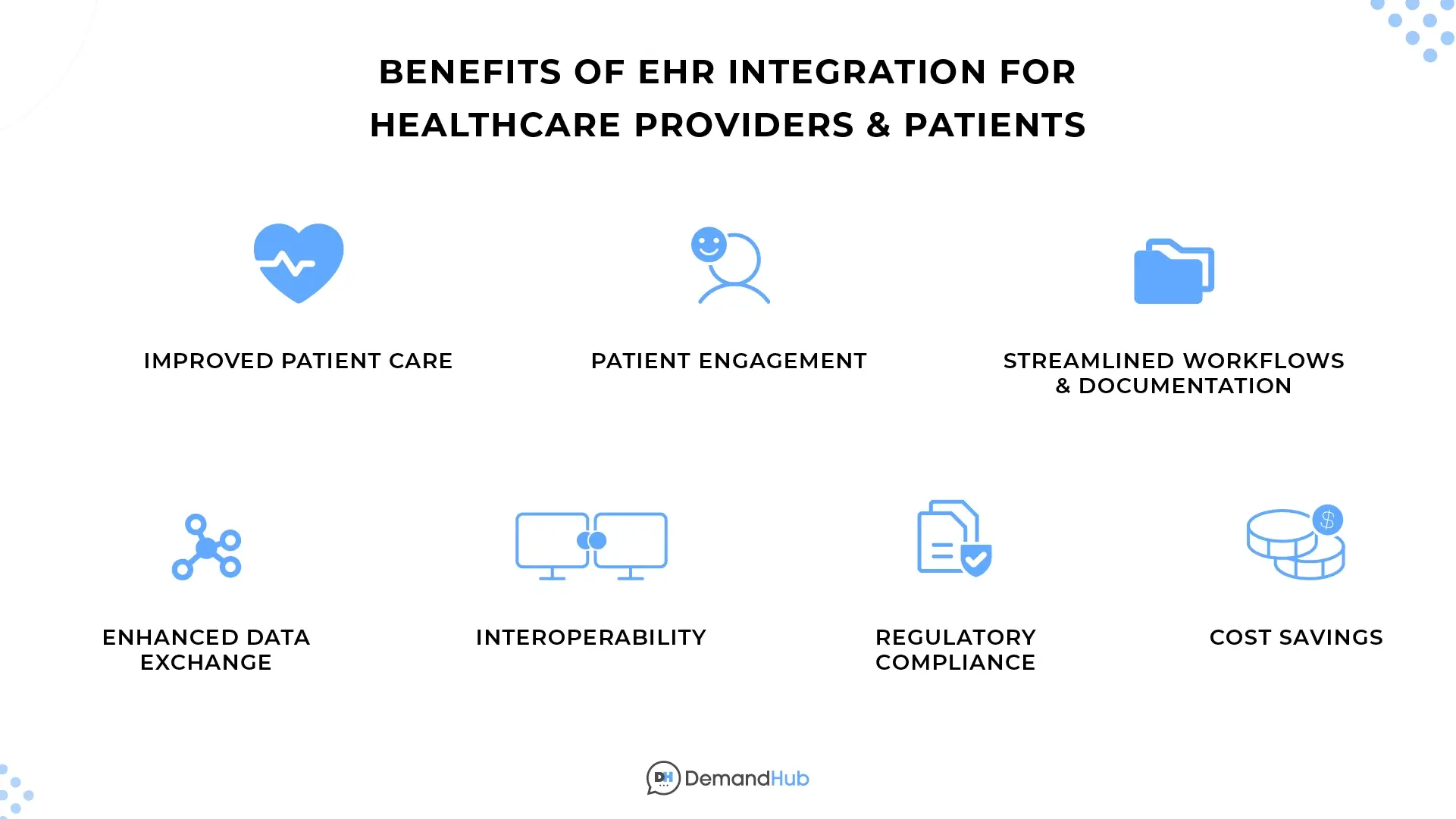
1. Improved Patient Care
With access to a complete medical history, healthcare providers can make more informed decisions, leading to better patient outcomes. EHR integration also reduces the risk of medical errors, such as incorrect diagnoses or medication interactions.
2. Enhanced Data Exchange
EHR integration facilitates real-time data exchange between providers, laboratories, pharmacies, and other stakeholders. This ensures that all parties have access to the most up-to-date patient information.
3. Streamlined Clinical Workflows and Documentation
EHR integration simplifies documenting patient encounters, making it easier for healthcare providers to maintain accurate and up-to-date records. Integrated EHR systems facilitate seamless communication between doctors, laboratories, pharmacies, and other parties.
4. Interoperability
EHR integration promotes interoperability, allowing different healthcare systems to communicate and share information effectively. This is especially important in emergencies where timely access to patient information can be life-saving.
5. Regulatory Compliance
EHR integration helps healthcare providers comply with regulatory requirements, such as the Health Information Technology for Economic and Clinical Health (HITECH) Act and the Meaningful Use program, which encourage the adoption of EHR systems and data exchange.
6. Patient Engagement
EHR integration allows patients to access their own medical records, enabling them to take a more active role in their healthcare. This can lead to improved patient satisfaction and better adherence to treatment plans.
7. Cost Savings
EHR integration reduces the need for duplicate tests and procedures, leading to cost savings for healthcare providers and patients.
Challenges and Solutions for EHR Integration
EHR integration offers numerous benefits for healthcare providers and patients.
However, implementing EHR can be challenging. Below are some common challenges and solutions for successful EHR implementation.
Technical Challenges and Solutions
| Challenges | Solutions |
|---|---|
| Compatibility with Current Systems - Many practices rely on multiple systems for various functions, making it challenging to find an EHR system that integrates seamlessly. This issue often leads to resistance to adopting new EHR systems. | An all-in-one software solution like DemandHub offers compatibility with leading dental EHRs, including Eaglesoft, Curve Dental, Dentrix, and OpenDental. This ensures efficient patient management without sacrificing the preferred EHR solution for your practice. |
| Data Standardization - EHR systems may use different data formats and standards, making integrating and exchanging data seamlessly difficult. | Standardized data formats like HL7 or FHIR can facilitate data exchange and interoperability between EHR systems. |
| Data Mapping - Mapping data elements between EHR systems can be complex and time-consuming. | Using data mapping tools and working with experienced EHR integration specialists can simplify the data mapping process and ensure accurate data exchange. |
| Data Security - Protecting patient data during EHR integration is crucial to comply with regulations and maintain patient trust. | Implementing robust data encryption, secure data transfer protocols, and access controls can help protect patient data during EHR integration. |
EHR Data Exchange and Cost
| Challenges | Solutions |
|---|---|
| Data Quality - Ensuring the accuracy and completeness of patient data during EHR integration is essential for effective decision-making and patient care. | Implementing data validation and quality checks during EHR integration can help ensure the accuracy and completeness of patient data. |
| High Cost - EHR implementation is expensive, with expenses ranging from $15,000 to $70,000 per provider. Although it’s a fixed cost, practices must embrace digital transformation. With healthcare practices relying on multiple software to manage patient health information (PHI), schedule appointments, and execute treatment plans, interoperability is necessary. | DemandHub’s easy-to-use interface seamlessly integrates all major EHR platforms, streamlining your technology stack. By automating all patient communication from a single, easy-to-manage platform, DemandHub helps practices optimize their operations and reduce costs. |
5 Best EHR Integration Software for Your Practice Management
Choosing the right software for successful EHR integration and practice management is vital. Below are 5 of the best EHR integration software options to consider:
1. DemandHub
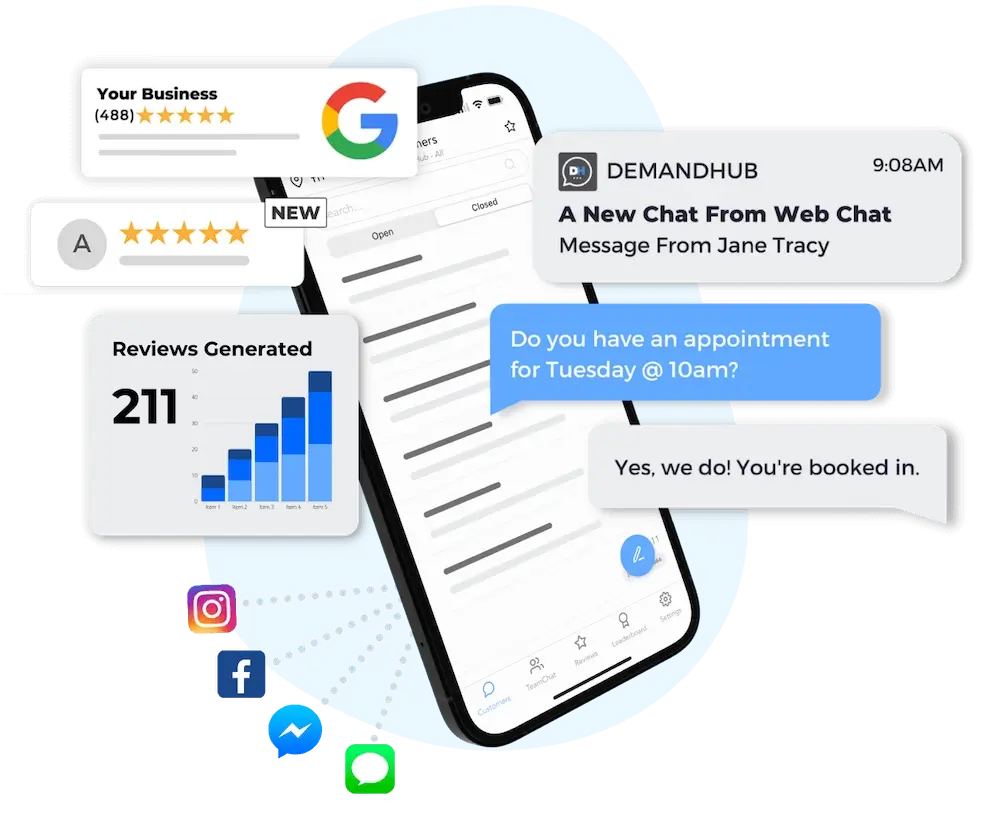
DemandHub is a trusted leader in the healthcare sector. It offers a patient experience platform designed to assist practices in attracting and retaining patients, all while streamlining administrative tasks.
The DemandHub Integrations is an incredibly reliable tool, enabling practices to integrate seamlessly with many EHR systems using a single API. With this, healthcare providers can automatically collect reviews, schedule appointments, send appointment reminders via Text, and increase revenue.
2. Cerner Millennium
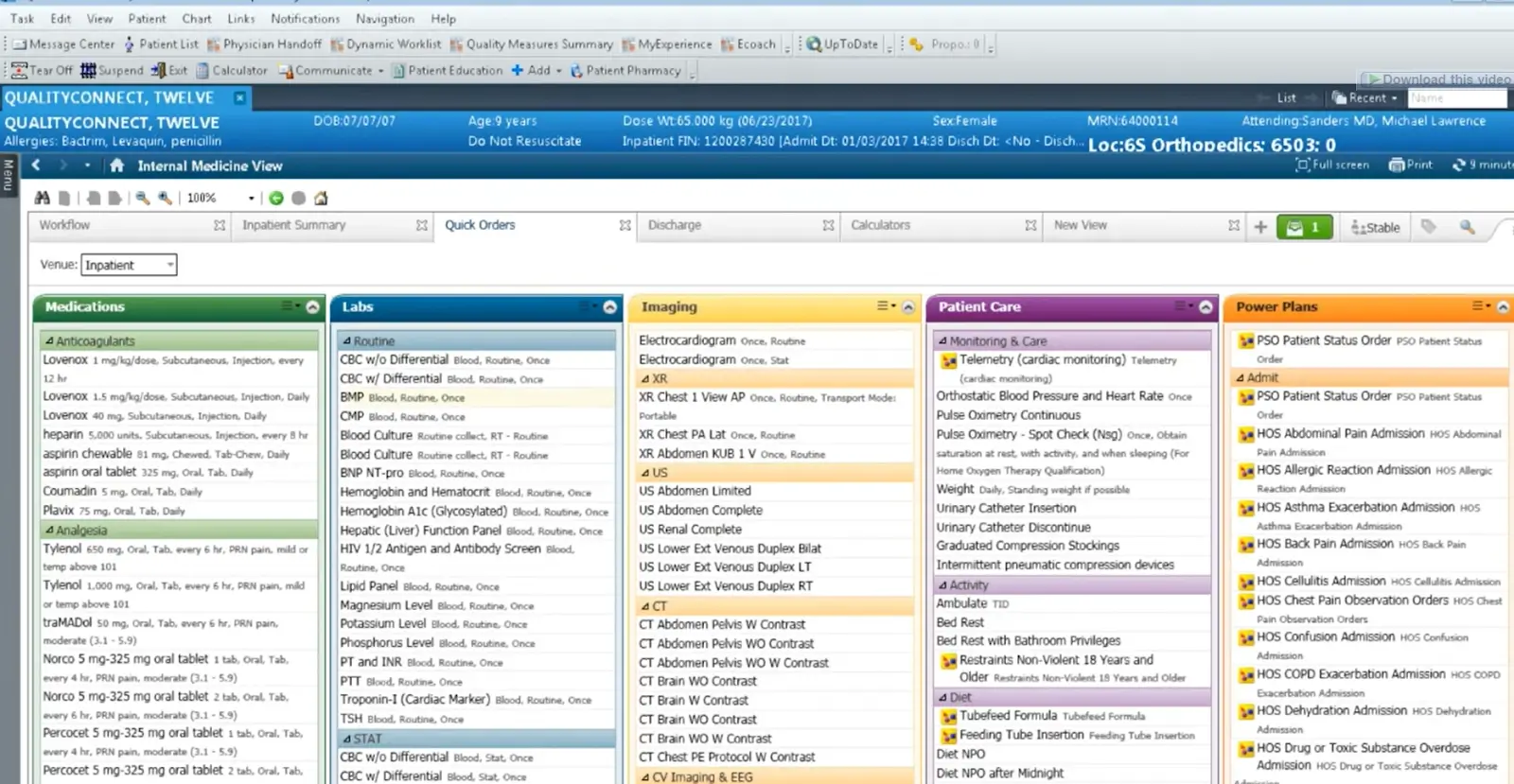
Image Source: Cerner Millennium
Cerner Millennium is a comprehensive EHR integration platform offering a wide range of features, including electronic prescribing, patient scheduling, and clinical documentation. It supports interoperability with other EHR systems and provides robust data security measures.
3. Epic Systems

Image Source: Epic
Epic Systems is a leading EHR integration software with a user-friendly interface and customizable templates. It supports data exchange with other EHR systems, laboratories, and pharmacies and offers advanced analytics and reporting features.
4. NextGen Healthcare
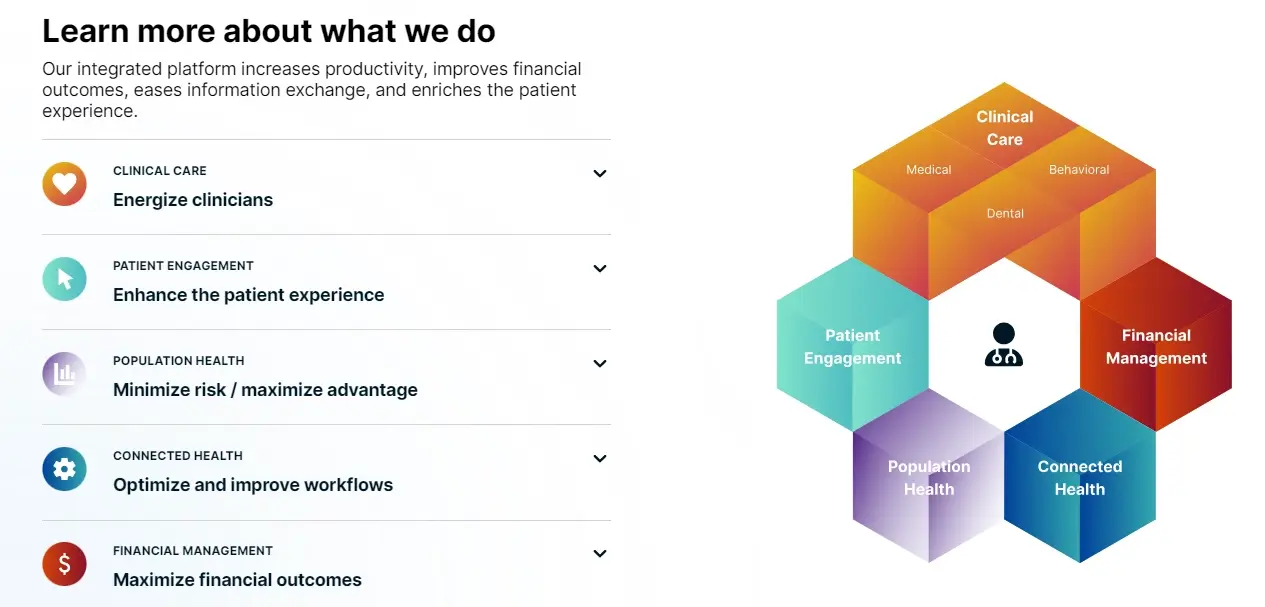
Image Source: NexGen Healthcare
NextGen Healthcare is committed to supporting ambulatory care providers, regardless of their size or community. They focus on increasing productivity, improving financial results, and making information exchange easier.
They offer a range of products, including practice EHR, health information exchange, and revenue cycle management. These are designed for multi- and single-specialty hospitals and small practices.
5. Athenahealth
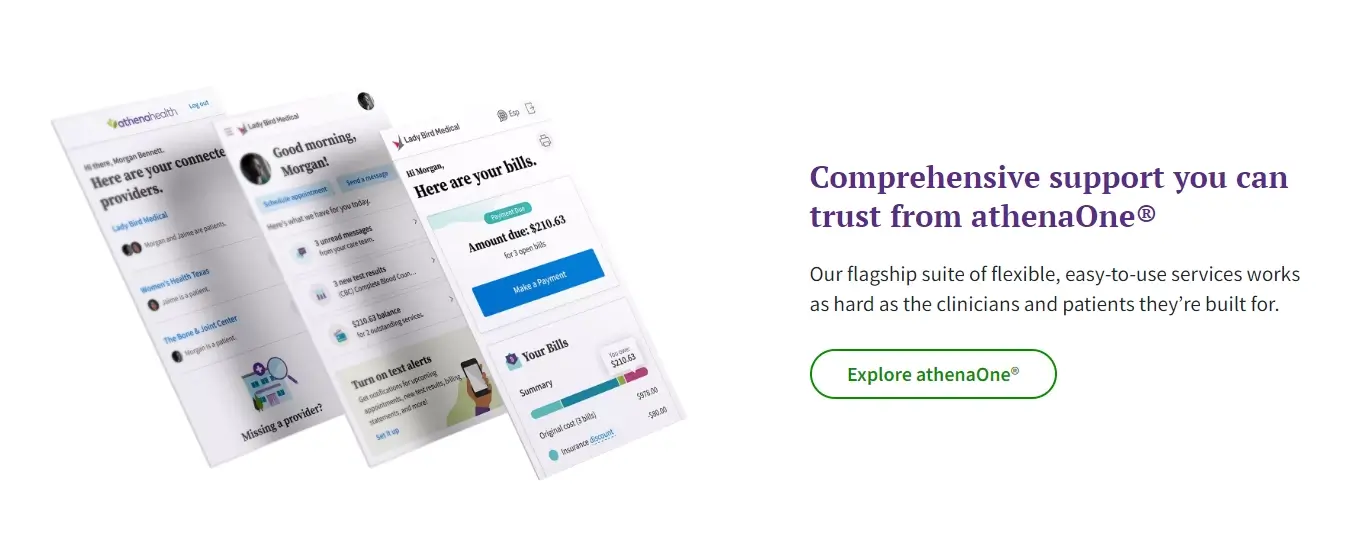
Image Source: Athenahealth
Athenahealth is a cloud-based EHR integration software with features such as electronic prescribing, patient scheduling, and clinical documentation. It supports data exchange with other EHR systems, laboratories, and pharmacies and offers advanced analytics and reporting features.
When selecting EHR integration software, it’s essential to consider factors such as compatibility with existing systems, ease of use, and vendor support. Conducting a thorough assessment of your practice’s needs and involving key stakeholders in decision-making can help ensure successful EHR integration and practice management.
Best Practices for EHR Integration
Planning and Assessment
Before doing anything, you should thoroughly assess the current system to identify integration needs. This involves understanding the existing workflows, data structures, and any potential challenges that may arise during integration.
Setting clear goals and objectives for the EHR integration project ensures all stakeholders are aligned and working towards the same outcome. This step also involves defining the project’s scope, establishing a timeline, and allocating resources.
Vendor Selection
Choosing the right EHR vendor is a critical step in the integration process. It’s important to ensure compatibility between the chosen EHR system and the existing systems in practice.
Evaluating vendor support and services is also essential for successful integration. This includes assessing the vendor’s track record, technical expertise, and responsiveness to customer needs.
Select a vendor with a strong reputation for providing reliable support and services. This will ensure a smooth integration process and minimizes disruptions.
Data Migration and Mapping
Data migration is a key component of EHR integration. It involves transferring data from legacy systems to the new EHR system. Ensuring accurate and secure data migration prevents data loss or corruption.
Mapping data elements between the old and new systems is also important to ensure consistency and EHR interoperability. This step involves aligning data fields, codes, and terminology between the systems to enable seamless data exchange.
Testing and Validation
Once the EHR system is integrated, comprehensive testing is necessary to ensure the system functions as expected. This includes testing data accuracy, system functionality, and interoperability with other systems.
Validating the integrated EHR system helps identify and address any issues before the system goes live. This step is crucial to ensure the EHR system meets the practice’s needs and supports efficient workflows.
Training and Support
Provide adequate training to healthcare staff for successful EHR integration. This includes training on how to use the integrated EHR system, navigate the interface, and access patient information.
Provide ongoing support to address any issues that arise after the system goes live. This includes providing technical support, addressing user questions, and resolving any possible problems.
Future of EHR Integration and Healthcare
The future of EHR integration and healthcare is promising, with several trends and innovations shaping the industry. One of the key trends is the increasing adoption of cloud-based EHR systems, which offer greater flexibility, scalability, and cost savings compared to traditional on-premises systems.
Another trend is the growing use of artificial intelligence (AI) and machine learning in EHR systems. It enhances data analysis, improves clinical decision support, and automates administrative tasks.
Interoperability remains a top priority in EHR integration, with efforts to improve data exchange and standardization across different EHR systems. Fast Healthcare Interoperability Resources (FHIR) standards are gaining traction, enabling seamless data sharing and integration between EHR systems, mobile apps, and other healthcare technologies.
The potential impacts of these trends and innovations on healthcare delivery and patient outcomes are significant. Enhanced EHR integration can lead to more efficient workflows, better coordination of care, and improved patient engagement.
EHR integration can support more informed clinical decision-making and personalized care by providing healthcare providers real-time access to comprehensive patient information.
Conclusion
EHR integration is a critical factor in choosing a practice management solution. By following best practices for EHR integration, practices can ensure successful implementation and adoption of EHR systems, leading to improved efficiency, enhanced patient care, and better outcomes.
DemandHub stands out with its extensive integrations, ensuring compatibility with your current or future EHR solution. With auto-syncs occurring every 30 seconds, DemandHub offers a speed surpassing any other market competitors.
Explore how DemandHub can transform your practice and elevate patient care by scheduling a demo today.




